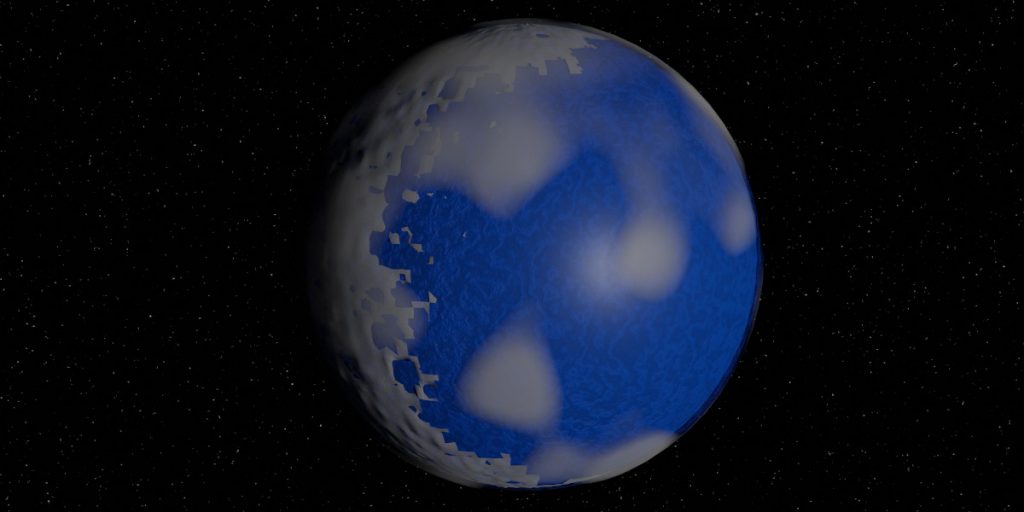Sapphire

With no Traveller game this week, I’ve instead written up details on a world that will probably feature in an upcoming adventure I have planned. It’s really just going to be scenery, and it is unlikely (though possible) that it will actually be visited, but I quite liked the idea.
Sapphire is the 4th world of the Scaladon system. It is a terrestrial world of type EuPelagic, being mostly rock covered in a 100km thick water ocean. It has enough of an atmosphere to retain heat.
Diameter: 14,200km
Distance: 2.5 AU
Surface Gravity: 8.2m/s/s (84% standard)
Atmosphere: 90% Oxygen, 9% Nitrogen, 1% Carbon Dioxide
Pressure: 130% Standard
Hydrographics: 100%
Surface Temperature: 7°C
Day Length: 13d 11h 14m 43s
Population: 3,000
Technology Level: A (supported by Scaladon main world)
Nobody is quite sure why Sapphire has such a slow rotation, though it is thought to most probably have been caused by an interaction with a large body early in the solar system’s formation. It means that both the weather and ocean currents are barely affected by the planet’s rotation, and weather patterns tend to drift randomly across the surface according to the seasons.
It does mean however that the night side temperature can be bitterly cold, with ice forming on the dark side of the planet. Only the poles though are permanently ice covered – though the ice stretches across all latitudes on the night side, it is a thin, almost slushy ice in most places, and there are hot sorts far above volcanic vents which stay ice free all day long.
Given the high oxygen content, it is probably fortunate that Sapphire has no surface land, and it has made the world very difficult to colonise. The only inhabitants live beneath the surface of the ocean, away from the highly reactive atmosphere.
The world is known for its waves. With huge open oceans unbroken by land, coupled with the low gravity and convection currents across the terminator, they can last for thousands of kilometres, and reach tens of metres in height. The exact mechanisms which start such world-waves off isn’t entirely understood, and is still being research by the marine scientists stationed on the world.
Though EuPelgaic worlds can create high density forms of Ice due to the extreme pressures, the oceans of Sapphire, even at 100km, aren’t thick enough for that. This allows the ocean depths to directly interact with the rocky crust, allowing the stirring of chemicals useful for life. And the seas of this world team with it.
Huge whale-like creatures, with frills along their sides to provide motion are the largest creatures, along with translucent sea serpents which can reach 100 metres in length. Predators are common in the upper options, and in the deeps strange jellies can be found, feeding off the dead biomass that filters down from above.
Even the lightless ocean floors have life of a sort, things that wriggle and burrow in the silt, especially around the volcanic vent. Nothing on this world has evolved legs, or anything like them, instead relying on flexing or frill-like appendages to propel themselves through water or mud.
Above the oceans though, the world is lifeless. Nothing has evolved to live outside of the ocean depths.
The small population here is almost entirely dedicated to the scientific research of Sapphire, and is supported by the main world of Scaladon Prime. They can build no technology of their own, and all resources are imported from the main world with the exception of seafish for food they are highly dependent on their supporters back home.
There are half a dozen research centres living out of mobile research labs that stay permanently beneath the surface. They are reached through the use of submersible space craft that drop quickly down out of orbit and dive beneath the waves to dock with the labs. They spend as little time as possible in the highly reactive atmosphere.